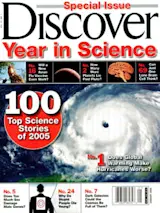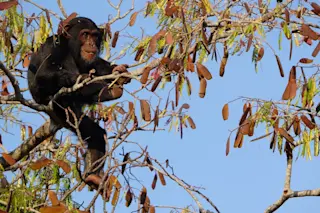Photosynthesizing Life-Form Exists Without Sunlight
Long confined to sun-loving, surface-dwelling organisms, the process of photosynthesis went underwater this year—7,843 feet under.
J. Thomas Beatty, a microbiologist at the University of British Columbia, and a team of researchers found a new type of bacteria off the coast of Central America. They are the first known organisms to derive energy by photosynthesis while living in an environment naturally devoid of sunlight.
Beatty believes that when 570 degree Fahrenheit water from thermal vents hits cold, deep ocean currents, several light-producing processes may occur: sonoluminescence from imploding gas bubbles; chemiluminescence from chemical reactions (analogous to fireflies lighting up); crystalloluminescence from the formation of crystal bonds; and triboluminescence from the breaking of those bonds. Nonetheless, the light emitted is so slight that very few bacteria can grow. "There are fewer than two cells for every milliliter," says Beatty. That's proportionally less than a single grain ...














